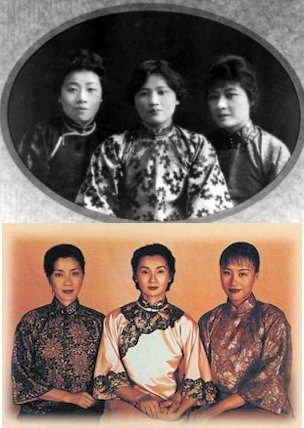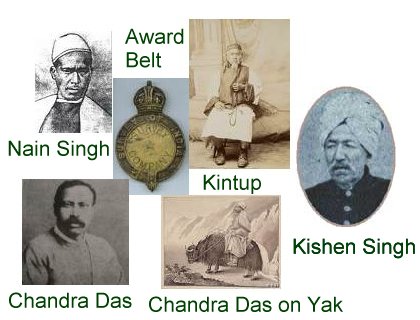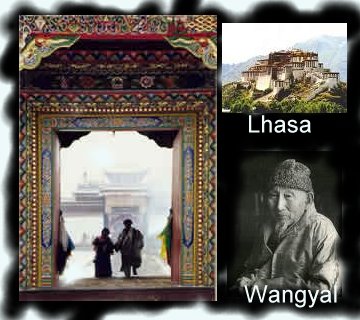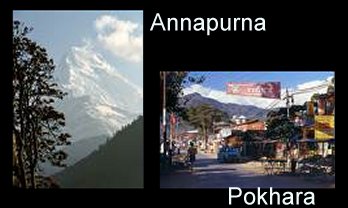The Shadow of the Great Game The Untold Story of India’ s Partition, Narendra Singh Sarha, 2006
Written by a lifetime Indian diplomat and onetime aide-de-camp to Lord Mountbatten, this is the well researched account of the partition of India to create Pakistan in 1947. The book was the number one bestseller in India. The Great Game is the name used to describe the rivalry and strategic conflict between the British Empire and the Russian Empire for supremacy in Central Asia from about 1813 until 1907. The term was popularized by Rudyard Kipling in his work Kim. Sarila believes that the most important factor leading Britain to support the creation of Pakistan after WWII was their fear of Russian Soviet expansion into the Middle East and South Asia. Britain came to believe that the British dominion, Pakistan, envisioned by Muhammad Ali Jinnah would be a continuing ally, source of troops, base of operations, in their attempt to contain the Soviet Union. Congress Party president Jawaharlal Nehru, insisted on the non alignment and neutrality of an independent India.

Mahatma Gandhi
The great Mohandas Karamchand Mahatma Gandhi comes off here as an ineffective loose canon. He is reported to have said in June 1940 to the Viceroy of India Linlithgow, who thought he must be senile;
Let them (Nazis) take possession of your beautiful Island, if Hitler chooses to occupy your homes, vacate them, if he does not give you free passage out, allow yourself, man, woman, and child to be slaughtered.
The next day Gandhi wrote a letter to Linlithgow;
You are losing: if you persist it will only result in greater bloodshed. Hitler is not a bad man. If you call it off to-day he will follow suit. If you want to send me to Germany or anywhere else I am at your disposal.
At this time Gandhi said that he “…expected the Jews to pray for Hitler, who was not beyond redemption.” A biographer Robert Payne comments:
In the quiet of the ashram the greater quiet of the gas chambers was inconceivable; he did not have and could not have any imaginative conception of their plight, nor had he much conception of dictatorships.
Gandhi also wrote to Hitler in December 1941:
In the non-violent technique there is no such thing as defeat…I had intended to address a joint appeal both to you and Signor Mussolini
Gandhi had supported the British during the Boar War and during WWI but since had developed his ideas of satyagraha (non-violence) and Indian mass movement using traditional Hindu religious techniques such as fasting. He spent most of his time in his ashram. He became enormously popular in India and in the West but was unprepared for the realities of WWII. He remained ineffective and tragically outside of decision making through the key period.
In the meanwhile, and without Congress interference, the British to able to recruit as many soldiers as they could train, over 2.5 million throughout the war. During the war, India’ s role as a market for British goods declined, but the requirements for fighting manpower became the colonies chief value to Britain. 35% of Indian soldiers were Muslims and 50% of all soldiers came from one province the Punjab.
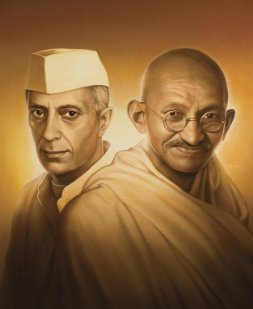
Nehru and Gandhi
Jawaharlal Nehru, pushed by his father, Motilal Nehru, to become President of the Congress Party, and named by Gandhi his legal successor, comes off here as a longwinded, indecisive, ineffective, naive, almost innocent politician. The entire Congress Party withdrew from the British created Federal government in 1939 after demanding a British promise of complete independence for India after the war.
Winston Churchill was notorious for his hatred of India and Gandhi. Throughout the war, British leaders had no intention of losing India as a colony. The British leaders perhaps foresaw a gradual transition over forty or fifty years, of India into a Commonwealth nation like Canada or Australia.
FDR saw WWII as demonstrating the need of Europe to divest themselves of their colonies immediately after the war. Since the US lost the Philippines to Japan early in the war, Churchill met this advocacy with some skepticism:
The concern of the Americans with the strategy of a world war was bringing them into touch with political issues on which they had strong opinions and little experience…states which have no overseas colonies or possessions are capable of rising to moods of great elevation and detachment about the affairs of those who have.
Britain had divided India into eleven administrative provinces. There were still 350 princely states in India with Hyderabad the size of France and Rajasthan even larger. Muslims made up a quarter of the population of India, about 90 million as a whole and were in the majority only in the British provinces; the NorthWest Frontier, Punjab, Sind, Baluchistan, and Bengal, with about 30 million. None of these provinces was in favor of partition.
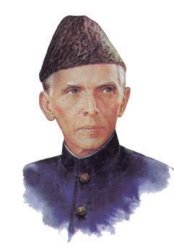
Muhammad Ali Jinnah
Muhammad Ali Jinnah was a secular non practicing Muslim living in Bombay, a dandy lawyer married to a beautiful younger Parsi (the most westernized of Indians originating in Persia 1000 years ago and having their own religion and traditions) woman. Jinnah was so ignorant of Muslim traditions that he scheduled a lavish dinner for a visiting British dignitary during Ramadan, a period of Muslim fasting. Sarha characterizes Jinnah as a megalomaniac.
Jinnah’ s Muslim league was in decline, capturing only a quarter of the votes in all Muslim elections. He latched onto the idea of partition in a desperate attempt to gain personal power. Sarha discovered that Churchill and Jinnah carried out a secret correspondence over some years via a person living in the Churchill household. For Jinnah partition was a power play, for Churchill and the British authorities in India the idea that the princely states and provinces might choose to divide from India after the war was the old British strategy of divide and conquer. Churchill also made this concession to appease FDR. The Congress leaders refused to compromise their position of full independence and remained outside the process.
In July 1942, believing that the axis powers (Germany, Italy, Japan) would win the war, a furious Gandhi initiated a Quit India, ratified by the Congress in August, demanding that the British grant immediate independence to India and leave. The British reacted by arresting the leaders and putting down demonstrations and riots. Gandhi lost even the support of the Labour Party in Britain with this move:
If you persist in demands which are at this moment impossible to grant, you will cripple your cause and humble the influence of us who are your proud and faithful advocates.
To regain some support Gandhi initiated a fast in February 1943 from prison. Unimpressed, Churchill wired Linlithgow; I understand Gandhi has glucose in his water could you confirm? FDR conveyed to London the message that “Gandhi should not be allowed to die in prison.”
Sarha portrays Gandhi’s later life as pathetic and futile stating that the last great service Gandhi gave for India was in 1932 where he successfully opposed holding separate elections for the lower castes (separate elections were held for Muslims since 1907.) Today the lower castes make up 20% of the population and wield great political power.
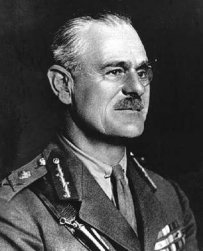
Field Marshal Wavell
In 1943 a new viceroy was appointed, Field Marshal Wavell, an upper middle class military man with victories over the Italians in North Africa and stunning defeats against the Japanese in Singapore, Malaysia, and Burma. The vice royalty was considered by Churchill an honorable retreat for a man “eminently suited to run a provincial country club.” Wavell came to the job with extreme animosity toward the Congress party. He had suffered the defection of 50,000 Indian troops to revolutionary Subhash Chandra Bose, a Congress member, in Malaysia and sabotage of military facilities in the Congress Quit India campaign.
By 1944 Wavell came to the conclusion that the best way forward was to build up Jinnah and create a British dominion, Pakistan, where British forces could maintain bases including the ports at Karachi and Dacca and from which it could continue to recruit military forces.
After the war much had changed. An Indian scholar writes:
The growing role of strategic air power and the vital importance of Middle Eastern oil had transformed British policy in Asia. For over a century, British policy in the Gulf had largely been shaped by the strategic interests of her Indian Empire. This was no longer the case… By 1947, the tables had been turned – Britain’ s strategic interests in the Gulf and Middle East had become a major factor in her South Asia policy.
1945 brought a number of pressures and changes. The Labour Party won the election in Britain. The Americans dropped the Atom bomb on Japan ending the war and leading the Americans to increase pressure on Britain to eliminate their colonies. A major famine swept India due to both lack of resources and the growing incompetence of the British Raj; The British colonies were costing the government 2 billion pounds annually which the British had to borrow from America.
Labour believed they could work effectively with Nehru and Congress. Unfortunately Labour also appointed two pro-Jinnah cabinet members to key Indian positions, one a former aid to Linlithgow, the other a close associate of Churchil. Wavell remained viceroy. The official Labour policy was:
1 Britain must maintain bases of operation in India to counter the Soviets.
2 Partition is the only way to guarantee 1 since Congress will not promise to cooperate with Britain on foreign policy.
3 Partition must not be attributed to Britain.
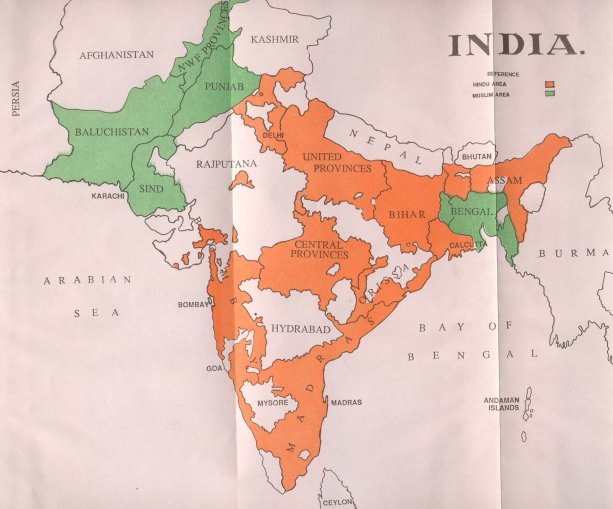
Indian Partition Map
In February 1946 Wavell introduced his blueprint for Pakistan, shown in green on the map, dividing Punjab to pacify the Sikhs with Gurdaspur and Amristsar their holy city remaining in India, and dividing Bengal to pacify the Hindu majority in Calcutta. The provinces to remain in India are shown in orange. No provision was made for the fate of the princely states, uncolored on the map.
Nehru sent a typically longwinded letter to the British in January 1946 giving his position which is quite clear; the fate of India should be left to plebiscites in the provinces; Jinnah’ s support is shallow and could be overcome easily; Muslim majority provinces are unlikely to vote for partition; Indians are prepared to struggle against Britain for independence.; Nehru would prefer a negotiated settlement.
Muslim elections in India in 1946 showed Jinnah’ s Muslim league strong in Hindu dominant provinces and weak in the designated Pakistan provinces where the Muslims were already in control.
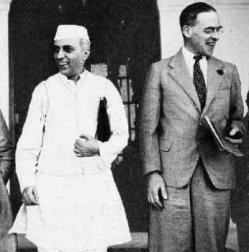
Jawaharlal Nehru with Sir Stafford Cripps
In March 1946 Labour Prime Minister Clement Richard Attlee sent a delegation headed by Sir Stafford Cripps to negotiate with Nehru and Congress with instructions to avoid Gandhi. Their goal was to get Congress to agree to a truncated Pakistan and enable the British to avoid blame and responsibility for the partition while assuring their military bases. The attention of this delegation made Congress leaders, promised control of a provisional government to oversee the transition to full independence, complacent while giving Jinnah the opening to launch direct violent action to force British acceptance of Pakistan. Attlee achieved his objective to:
1 put Congress leaders in charge of the interim government where they would be placated but blamed for any failure.
2 put on record the disadvantages of Pakistan scheme to later whittle away at Pakistan in later negotiations with Jinnah.
3 give the world the impression that Britain and Labour are trying to keep India united.
In July 1946 Jinnah opted out of the agreement and in August launched a violent attack against Hindus and Sikhs in Bengal and Bihar the only provinces controlled by the Muslim League. In the ensuring violence 5000 were killed and 20,000 injured. Wavell did not hold Jinnah responsible but used the violence to advance his views that Muslims and Hindus can’t coexist and partition is necessary.
Nehru assumed the position of prime minister of the provisional government and a new Congress leader emerges, Sardar Patel, a tough, practical politician. Patel advocated focusing Congress attention on the British, preventing the princely states from breaking with India and limiting the scope and damage of the Muslim League without direct confrontation. Wavell, in August 1946, believing that the British could hold out for no more than 18 months, submitted his plan for British withdrawal from Congress controlled provinces and the princely states. Wavell pressured Nehru into accepting Jinnah and the Muslim league into the interim government without Jinnah’ s agreeing to the principles of the government or promise calling off violent actions, thus enabling Jinnah to undermine the Nehru government from within.
The British had divided the NWFP province, designated to be part of the new Pakistan into two administrative parts, the settled Pathan regions including the cities, and the area of the nomadic Pathan tribes. The boundary with Afghanistan was drawn up in 1893, the Durand line, but the border has still not been accepted by Afghanistan. The British controlled the nomadic area through “subsidies”, a small cadre of tribal experts, and 10,000 troops. Their policy of control was always the less seen the better. The Amir of Kabul warned; “if at any time a foreign enemy appears on the boundaries of India these frontier tribes will be your worst enemy.” Over 30 major invasions of India have come through this area over the last 2000 years.
The NWFP considered Jinnah a pawn of the British and consistently supported the Congress party as long as they remained unseen. The naive Nehru decided to visit this province in October 1946. The tribes met him with hostility and demonstrations. Wavell said of the visit “Nehru’s visit more than anything else made partition inevitable.”
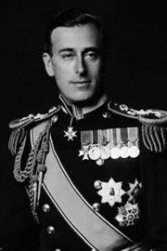
Lord Mountbatten
In March 1947 Louis Mountbatten, navy rear admiral and former supreme commander of southeast Asia was named viceroy. He has often been blamed for partition but like the good soldier he was, he was simply carrying out orders, if creatively. His charter:
1 fix responsibility for the division of India squarely on Indian shoulders.
2 persuade Congress leaders to give up NWFP and persuade Jinnah to accept a much smaller Pakistan.
3 Ensure that India remain a member of the British Commonwealth.
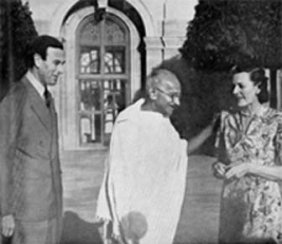
The Mountbattens and Gandhi
After meeting Nehru and V. P. Menon, Mountbatten decided to leave item 3 til last. Mountbatten, pretending to oppose partition, asked immediately to meet with Gandhi who had been ignored by previous viceroys. Gandhi became a regular source of information about Congress matters. Gandhi offered the suggestion that Jinnah be asked to form a new interim government. Mountbatten ignored Gandhi. Sarha points out that had Gandhi made this offer in 1928 and not in 1947 and Jinnah had become president of the Congress Party instead of Nehru, Jinnah, a more able and intelligent politician would have had his ambitions satisfied and the question of partition may never have arisen.
Mountbatten persuaded Jinnah that his strength lay with British support. Jinnah begs;
I do not care how little you give me as long as you give it to me completely…you must realize that the new Pakistan is almost certain to ask for Dominion status.
The British plan was that elected members of assemblies in each province be given a free choice of independence or affiliation with the new All-India Constituent Assembly. This presented a problem in NWFP, which would choose affiliation as its assembly stood. Olaf Caroe Britain’ s expert on tribal affairs had been appointed Raj Governor of NWFP. Mountbatten convinced Nehru to accept a new province wide referendum on the question since Congress may have lost its mandate since the last election.
Bengal, with its distinct culture and own language would certainly choose to be independent.
The deal as understood by go-between V. P. Menon was now;
1 the Wavell plan for a smaller Pakistan.
2 immediate transfer of power.
3 under the Act of 1935, the independent states would automatically become Commonwealth nations without Assembly action.
4 If India accepts the truncation of NWFP, Mountbatten will persuade the princes to join one or another state and not opt for independence.
This would mean 90% of princely territories would become part of India offsetting the loss of NWFP.
V. P. Menon had been born in the princely state of Cochin (now Kerala) and as the most able Indian tactician, draftsman, and negotiator, played a key role in total absorption of the princely states into India.
V. P. Menon became Mountbatten’ s closest adviser and believed that all territorial issues and boundaries should be resolved before independence to avoid instability and chaos after the hand-over. V. P. Menon raised this issue with Nehru in May 1947 and Nehru agreed.
Mountbatten revealed to Nehru the current British plan for the hand-over, which might have led to the Balkanization of India, should many provinces and princedoms choose independence from India. Faced with the original plan and the possibilities of Balkanization, Nehru was quick to understand the benefits of V. P. Menon’ s alternative to try to resolve all decisions and boundaries before the hand-over. Mountbatten then approached Gandhi with the plan saying it should be called Gandhi’ s plan. Gandhi agreed and intervened with the All-India Congress committee on June 14, 1947. His intervention was decisive.
Mountbatten with V. P. Menon’ s assistance then went one by one to the princely states threatening them with Muslim League inspired violence if they did not agree to join India or Pakistan. They succeeded without a single princedom choosing independence. Maharaja Hari Singh of Kashmir, a friend of Mountbatten surprised him by choosing to accede his kingdom to India, although a majority of the kingdom’s population was Muslim. This set off a series of events and wars between India and Pakistan that continue to this day.
Independence of India and Pakistan was celebrated on August 14, 1947.
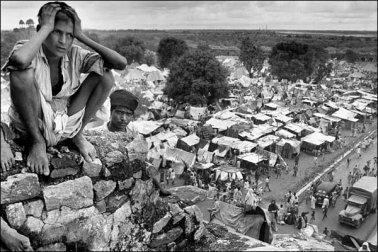
Delhi Refugee Camp
Not covered in this book were the massive displacements, violence and deaths caused by partition. As of 1951, 7,226,000 Muslims went to Pakistan from India while 7,249,000 Hindus and Sikhs moved to India from Pakistan. About 11.2 million or 78% of the population transfer took place in the west, with Punjab accounting for most of it. 5.3 million Muslims moved from India to West Punjab in Pakistan. 3.4 million Hindus and Sikhs moved from Pakistan to East Punjab in India. Elsewhere in the west 1.2 million moved in each direction to and from Sind. Deaths were estimated at 1 million but may have been as high as 1.5 million.
There have been three wars between India and Pakistan since independence. In 1971 a civil war in East Pakistan split the country apart to form the new nation of Bangladesh. India and Pakistan became nuclear powers in 1998 increasing the risks in future warfare between the two.
Two years after leaving India Wavell said in 1949:
There are two main material factors in the revolutionary change that has come over the strategical face of Asia. One is air power, the other is oil…The next great struggle for world power, if it takes place, may well be for the control of these oil reserves…This may be the battleground both of the material struggle for oil and air bases, and of the spiritual struggle of at least three great creeds – Christianity, Islam, Communism – and of the political theories of democracy and totalitarianism.
Around such lofty principals do people suffer, become refugees, and die.
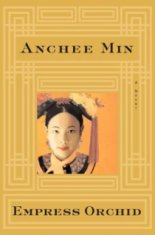
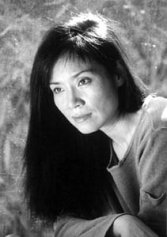
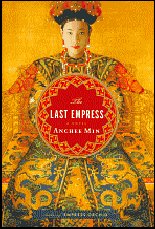
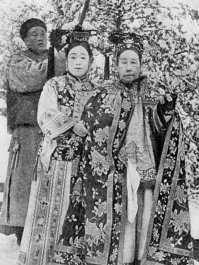
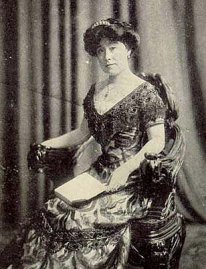
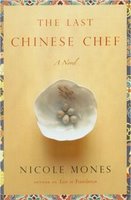
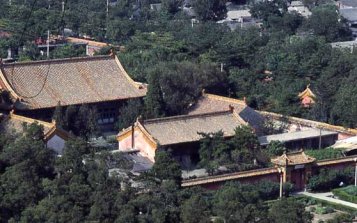
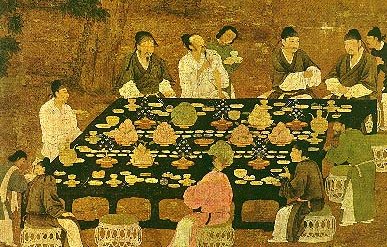
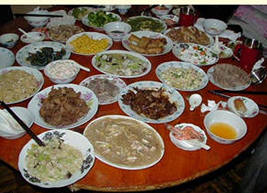









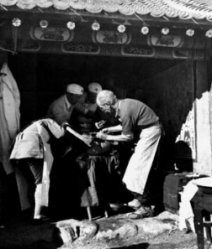
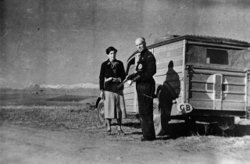
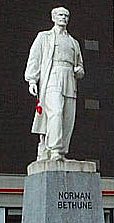
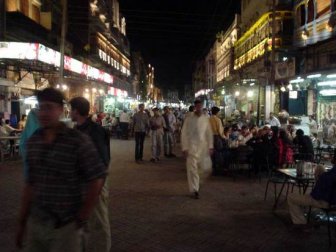

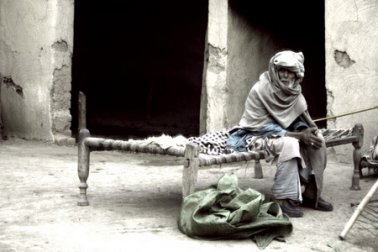
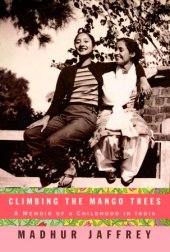
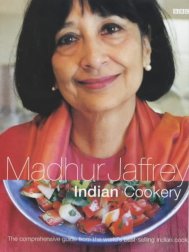
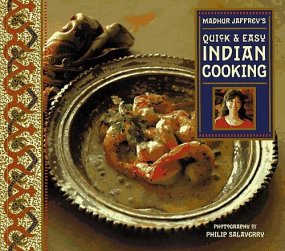
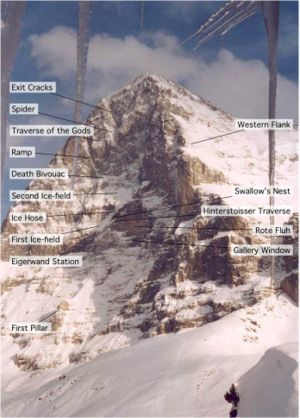 Eiger North Face
Eiger North Face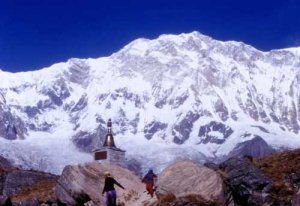 Annapurna’s Anatoli Boukreev Shrine
Annapurna’s Anatoli Boukreev Shrine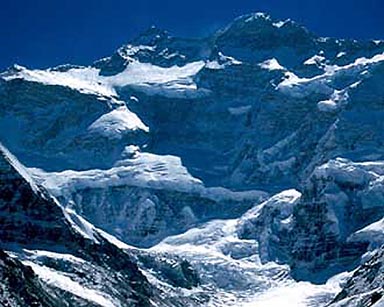 Kangchenjunga
Kangchenjunga